Table of Contents
Italians mean serious business when it comes to preserving their culinary traditions. No matter if you’re talking pizza, prosciutto, desserts, or wine, food is a lifestyle in Italy, and we’re totally on board with that.
Fittingly, even their cheeses come with a DOP (Denominazione di Origine Protetta) label. As we’ve discussed before, this is a label used for food products that not only determines how a product is made but also where it is produced.
Popular Italian Cheeses To Know
When it comes to popular Italian cheeses, you probably already know about Parmigiano-Reggiano, mozzarella, burrata, and ricotta. So here we’re focusing on other iconic types of Italian cheeses you should know.
We’re talking about where in Italy it’s made, what it tastes like, what makes it special, and the difference between various styles, from Asiago to Taleggio.
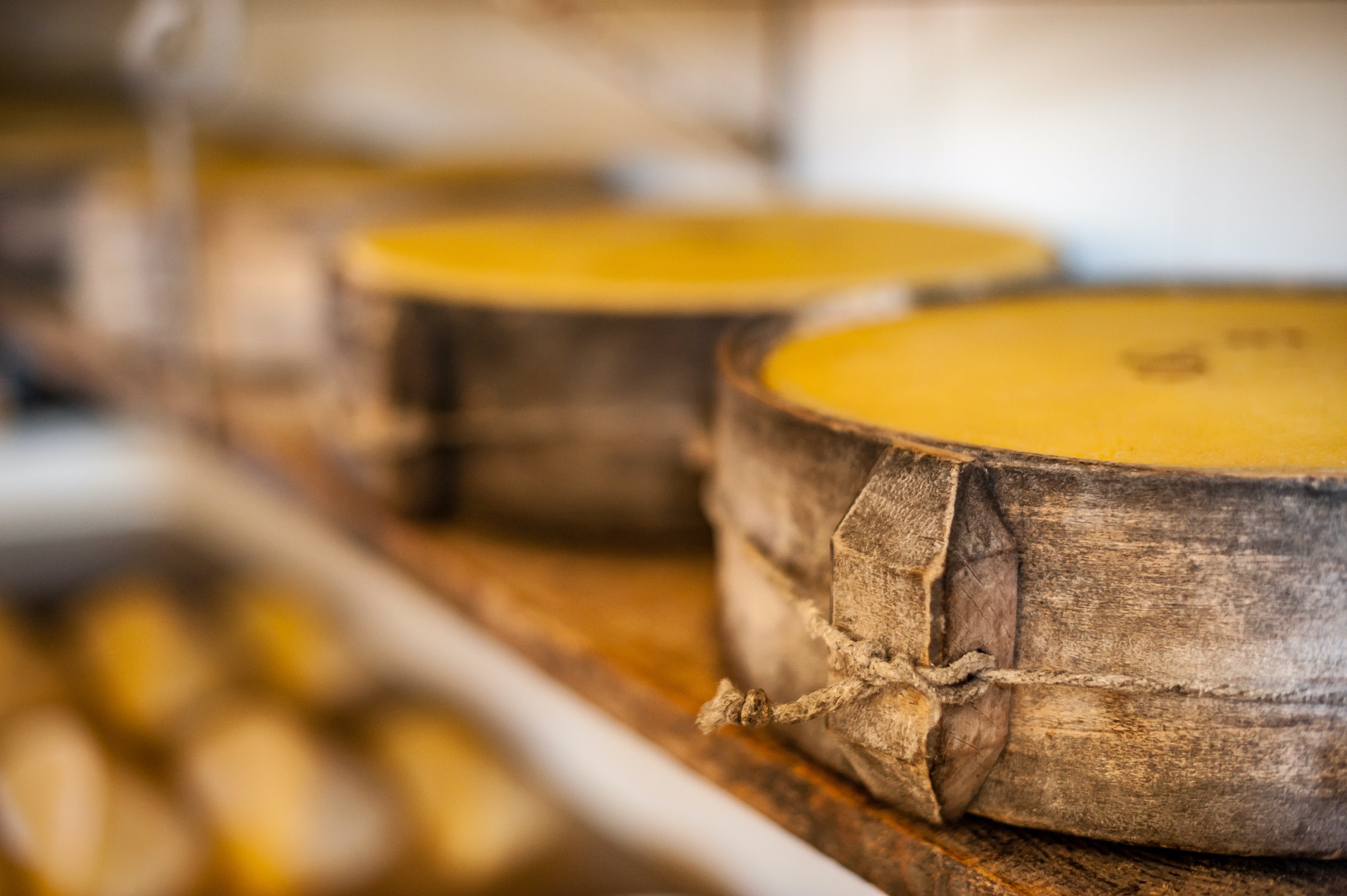
Asiago
Origin: Northern Italian Cow’s Milk Cheese
Under DOP rules, Asiago can only come from the mountainous northern areas of Vicenza, Trento, and parts of Padua and Treviso in northern Italy. Asiago cheese dates back as early as the 10th century and though early versions of Asiago used sheep’s milk, it is made with cow’s milk in modern times.
Several styles of Asiago exist with varying degrees of texture and flavor intensity all depending on the extent of the cheese’s aging. So Asiago will either be “Fresco,” meaning a young cheese aged for about a month, or “Stagionato,” meaning aged.
For example, Asiago Pressato means “pressed Asiago” and is made from milk from lower elevation pastures whose curds are pressed into a mold and brined for 20 to 40 days. Asiago Pressato is semi-hard to firm in texture and complements salads and sandwiches.
Asiago d’Allevo is an aged style (“Stagionato”) that requires unpasteurized milk from Pezzata Nera and Bruno Alpina cows which have grazed on higher mountain pastures. This style of Asiago is aged longer, between 4 and 15 months. The U.S. tends to prefer this aged style over fresh Asiago (Pressato).
As Asiago ages, its flavor profile goes from sweet to aromatic and bitter, to intense and spicy. In northern Italy, you’ll often find fresh Asiago tucked into brioche and Speck (smoked or pickled pork belly) sandwiches while aged Asiago goes well grated over polenta or risotto.
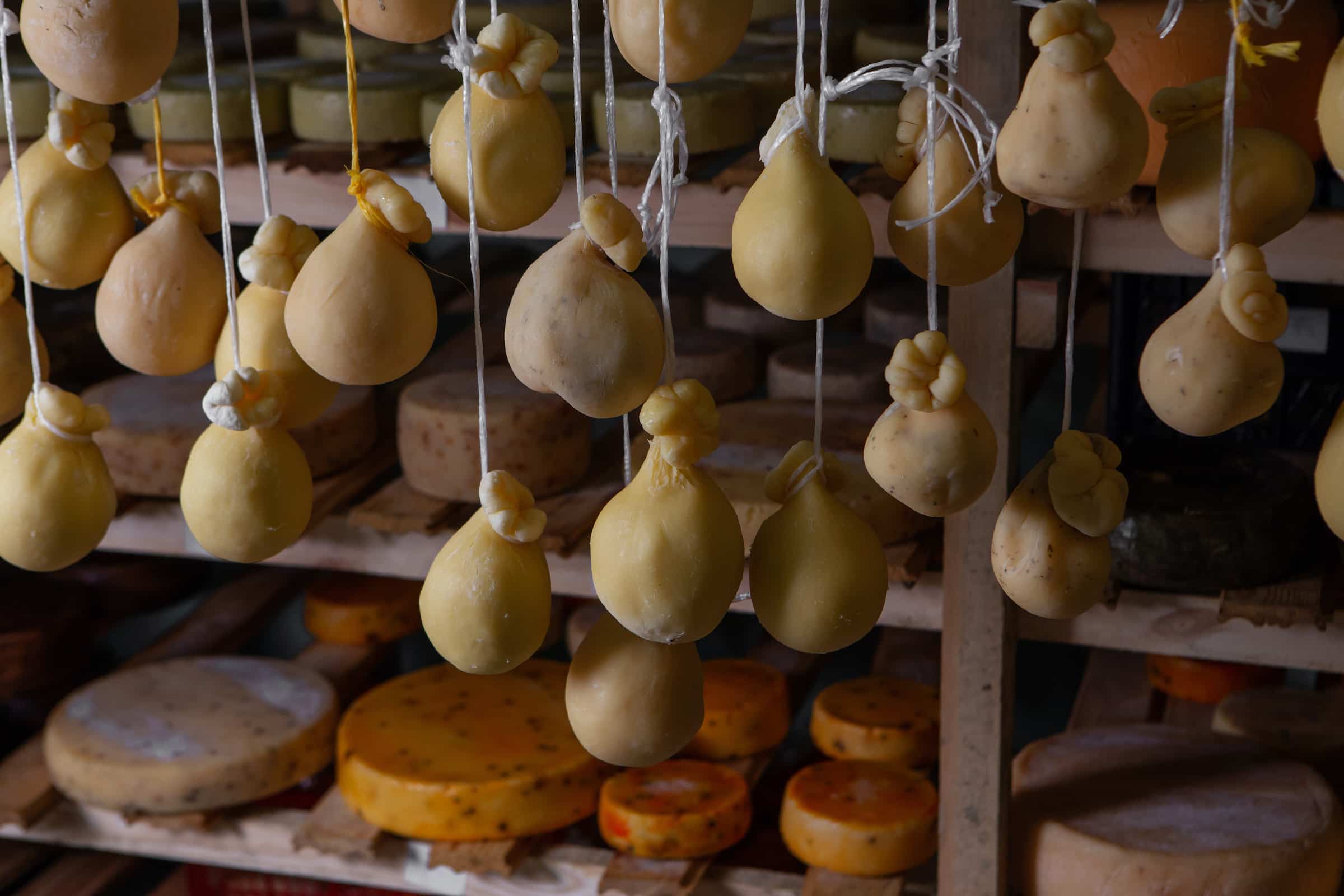
Caciocavallo
Origin: Southern Italian Cow’s Milk Cheese
Caciocavallo is a style of Italian cheese commonly found in Southern Italy. Dating back to ancient Greek and Roman times, the cheese is produced in Calabria, Basilicata, Abruzzo, and Puglia and even can be found in the Balkans.
Directly translated caciocavallo means “cheese on horseback.” Its name might refer to how the cheese ages because it’s shaped and hung with rope from wooden poles, perhaps to make it easier to transport. Another origin story suggests the cheese was originally made from mare’s milk.
Like mozzarella and Provolone, this is a stretched curd cheese (aka pasta filata) that is made from cow’s milk, but it tends to age longer than those cheeses. The cheese has a hard edible rind and is pear-shaped with a bit of twine still attached. Beyond those similarities, each region has its own take.
Caciocavallo Silano DOP is found in the Apennine mountain range, it ages for at least 30 days, and has a subtle aroma and sweetness. Meanwhile, Caciocavallo Podolico from Campania only uses unpasteurized milk from the Italian Podolica cow breed.
On the other hand milk from the Red Cow breed is the only milk used to make Campania’s Caciocavallo Pezzata Rossa cheese, which is aged for a minimum of 90 days.
Most commonly, you’ll see Caciocavallo served in slices with a glass of Southern Italian red wine. But it’s also great melted in the oven on classic southern Italian recipes like eggplant parmigiana.
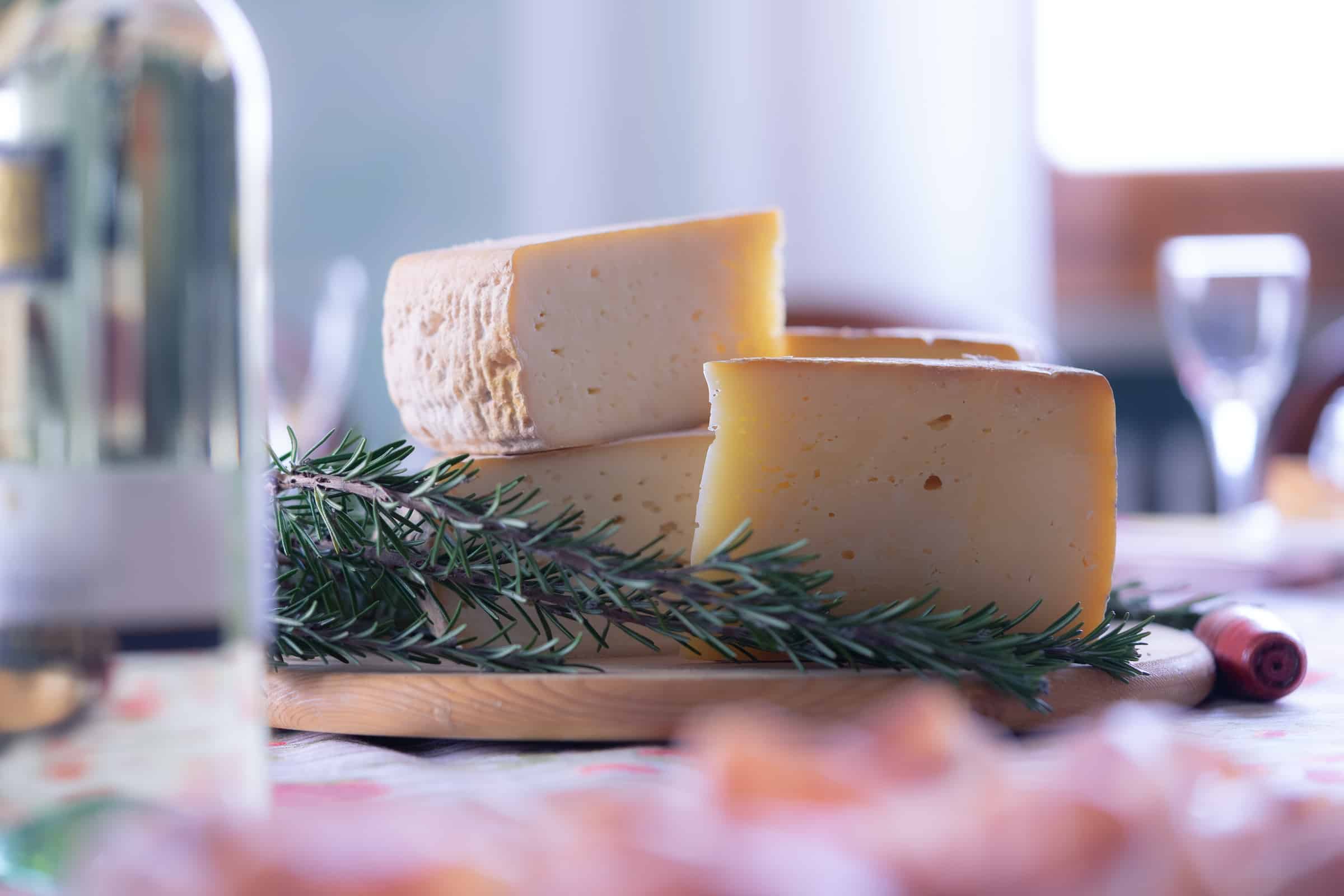
Fontina
Origin: Northwestern Italian Cow’s Milk Cheese
Fontina cheese comes from the Aosta Valley in the western Alps, near the Italian-Swiss border.
Fontina Val d’Aosta DOP is an unpasteurized cow’s milk cheese that’s been around since the 1200s, and, according to DOP rules, true Fontina cheese must age for at least three months. Brushing and salting every other day is required also as it’s a key step to form its rind.
Fontina smells aromatic and has a dense yet malleable mouthfeel. And can taste fruity and grassy at the same time.
France, Denmark, Sweden, and the U.S. make Fontina-style cheeses but look for DOP labeling for real deal Fontina.
It’s most traditionally used in dishes like Pollo alla Valdostana. But you can also try it in our Sfoglia alla Valdostana, or Fontina and prosciutto puff pastry squares.
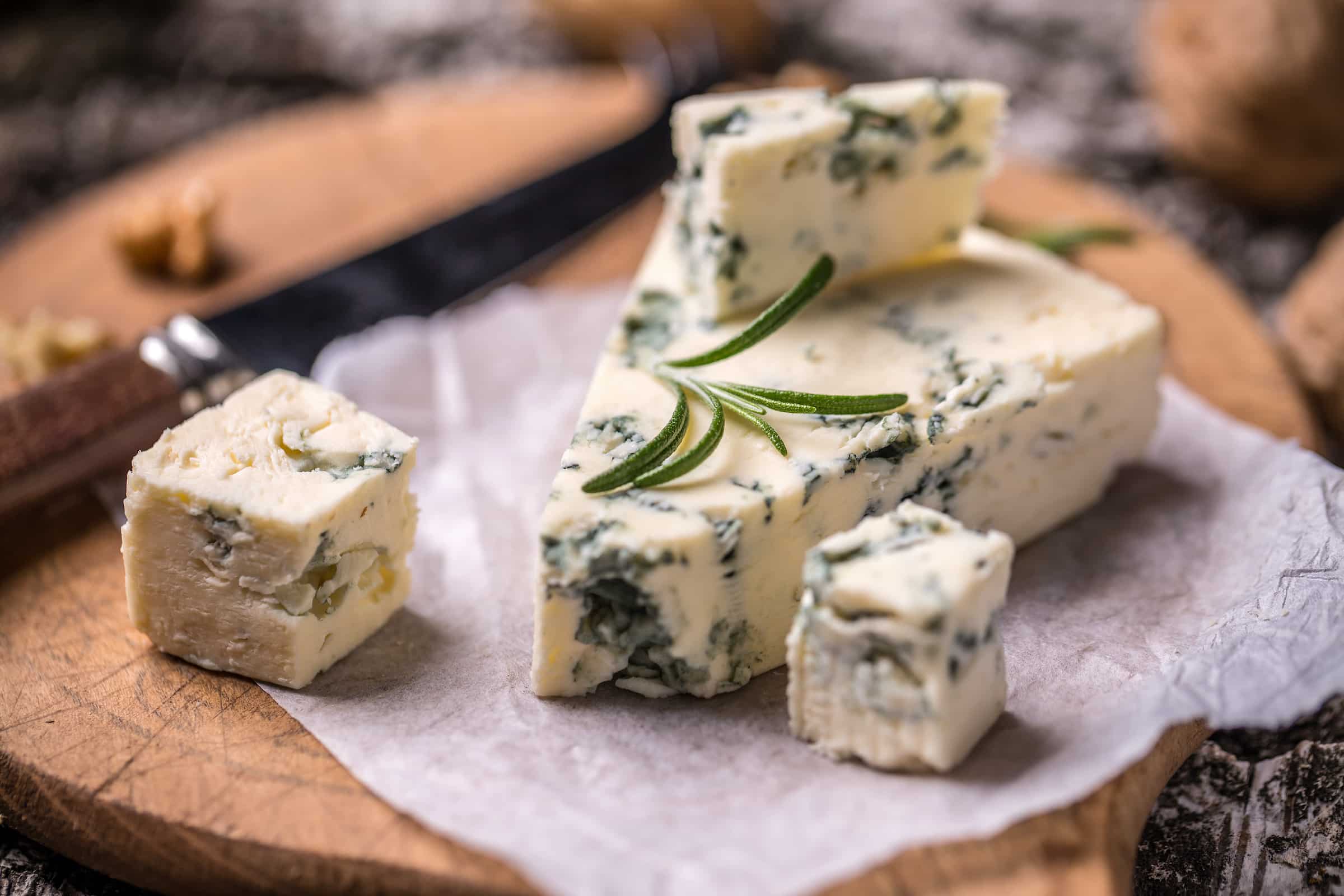
Gorgonzola
Origin: Northwestern Italian Cow’s Milk Cheese
This famous Italian blue cheese calls the town of Gorgonzola, near Milan. Having been made as far back as the 870s A.D., it didn’t gain popularity until the Renaissance (14th–17th century).
Later, the story goes that Winston Churchill loved the pungent cheese so much during WWII that he ordered Allies not to bomb the town of Gorgonzola, where the cheese was produced.
Today Piedmont and Lombardy regions make Gorgonzola in young Dolce and aged Piccante styles. Both styles begin with raw or pasteurized cow’s milk and they’re then pricked with copper needles which exposes the cheese to air and as such helps to develop its iconic blue veins. After, they are wrapped in foil to lock in moisture and left to age for a minimum of 50 days to three months per DOP rules.
Gorgonzola is creamy and dense, though more mature wheels have extra texture thanks to crystallized bits found in its veins, similar to what you might find in cheddar or gouda cheese. This cheese is more the life of the party than the wallflower, especially in more aged versions.
We’re into Gorgonzola served as part of an antipasto or on cheese boards; stirred into risotto; on pizza; or on this modern take on focaccia.
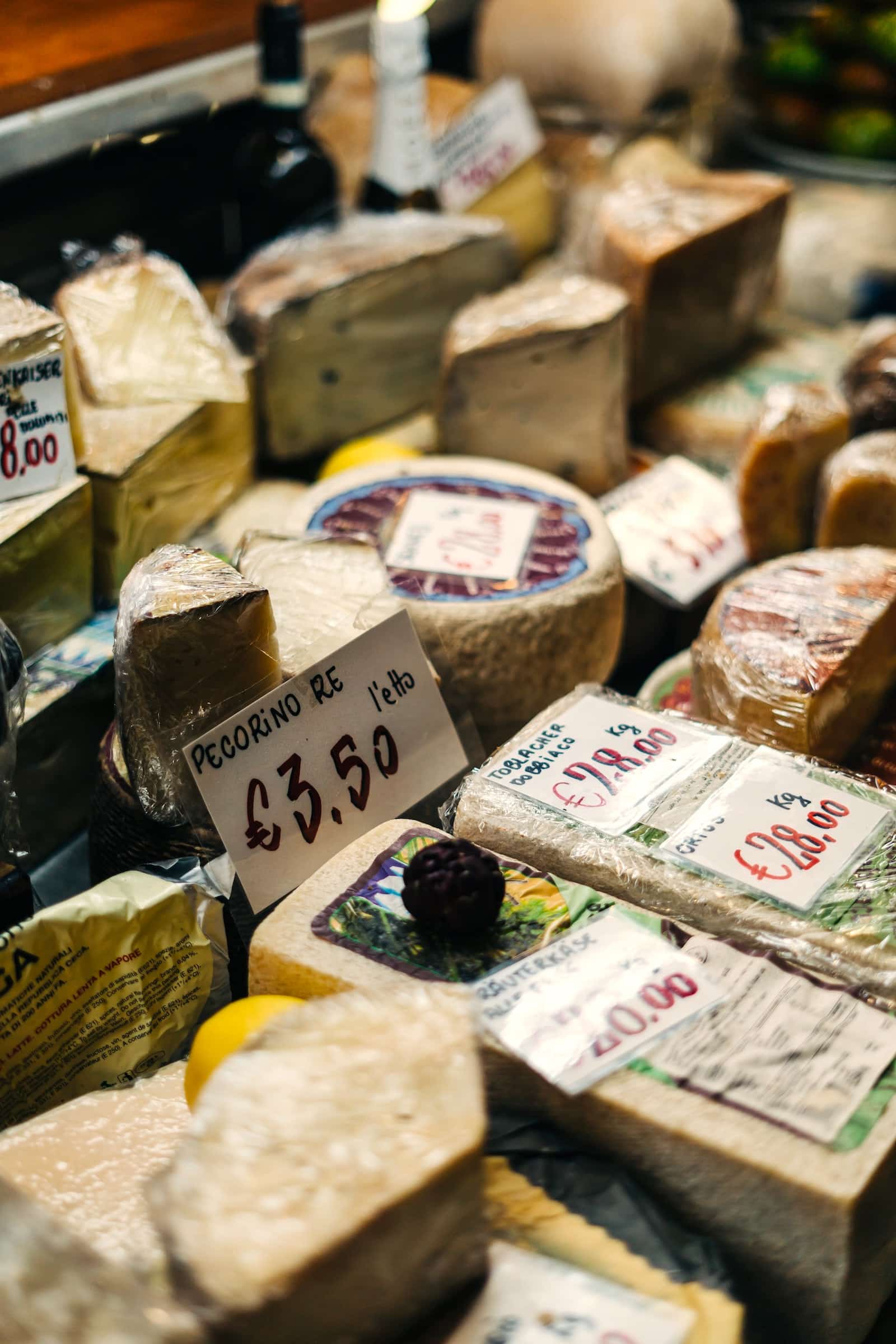
Pecorino
Origin: Italian Sheep’s Milk Cheese
Pecorino comes from the Italian word for sheep, “pecora,” so it’s probably no surprise that it’s an umbrella term for sheep’s milk cheeses made across the country. But there are regional designations, which inform the style and flavor of these Italian cheeses.
For example, beyond the ubiquitous Pecorino Romano from Rome, there’s Pecorino Toscano from Tuscany, and Pecorino Sardo from Sardinia made from the Sarda sheep. All of them are distinct cheeses and it’s important to note that they are not interchangeable.
The best-known Pecorino cheese is Pecorino Romano. This Italian hard cheese is aged for five months minimum and rubbed with salt several times during the process. It’s tangy, salty, and savory, and the longer it ages, the more intense it gets. Grate aged Romano over cacio e pepe or carbonara.
Despite Romano’s Roman origins, most Pecorino Romano production now happens in Sardinia, where sheep are so plentiful they outnumber humans!
Further confusing it all is that Sardinia has two styles of Pecorino called Pecorino Sardo DOP. Dolce is a young style of Pecorino Sardo, which is aged for up to two months, while maturo (or older) wheels age at least three months.
There’s also Pecorino Toscano DOP from Tuscany made with raw or pasteurized milk from sheep that eat a strict diet of hay or dried grass. Toscano ages for three to six months and tastes nutty and savory with a hint of sweetness. We love serving Pecorino Toscano topped with local honey and orange zest like they do at Florence’s Cantinetta dei Verrazzano.
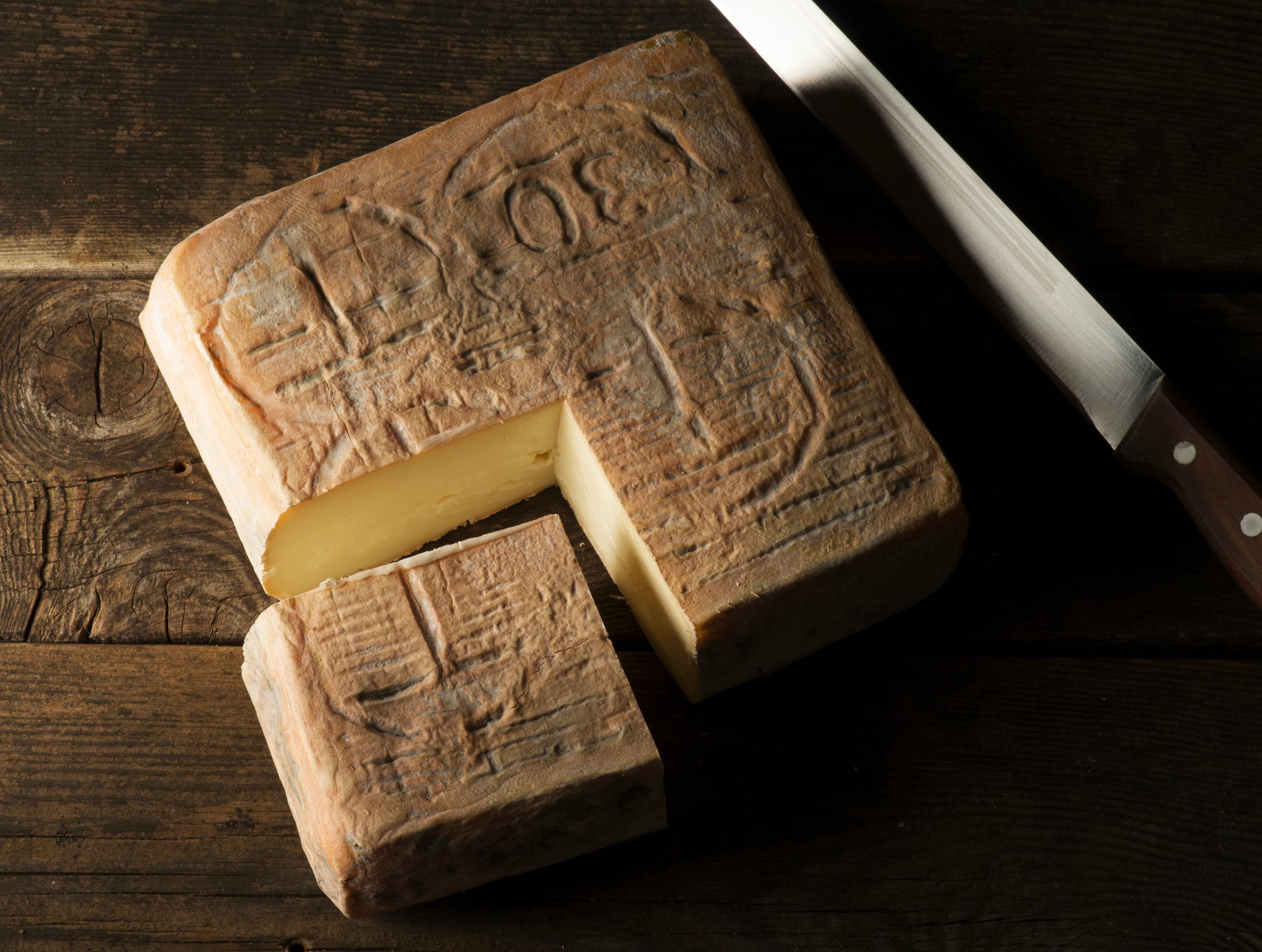
Taleggio
Origin: Northern Italian Cow’s Milk Cheese
Taleggio is a semi-soft, DOP-protected Italian mountain cheese made with cow’s milk from Northern Italy. Specifically, it is made in the Val Taleggio (Taleggio Valley) nearby the historic town of Bergamo. It’s produced at lower elevations where the air is more humid and as such is perfect for encouraging the growth of mold needed for its flavor.
The cheese ages approximately 40 days on wooden shelves that mimic its original production conditions during the 1200s. During that time the rind is scrubbed with salt to distribute the good bacteria that gives Taleggio its orange tinge.
And while the rind smells strong, Taleggio can taste delicate and buttery to more pronounced as it ages. We would spread soft and savory Taleggio on crusty bread, and pair it with fresh fruits and nuts. If you want to get creative, use it in place of Robiola Bosina in this Chestnut Gnocchi recipe.
There you have it: the Italian cheeses to try on your first (or next!) trip to Italy. And we absolutely recommend sampling the numerous many regional kinds of cheese you’ll encounter (even those not mentioned here) during your travels to one of our favorite foodie destinations.
Have Us Plan Your Italy Trip
Did you know we’re also a boutique travel agency that specializes in Italy travel planning? If you’re looking to plan one of the best trips to Italy, our Italy trip planner services are here to help you plan your perfect itinerary.
Photo Credit: Opening photo by pointbreak, Asiago By Venturelli Luca, Caciocavallo by Ilya Karnaukhov, Fontina by AlenWood, Gorgonzola by grafvision, Pecorino by Gabriella Clare Marino, Taleggio by Mauro Pezzotta